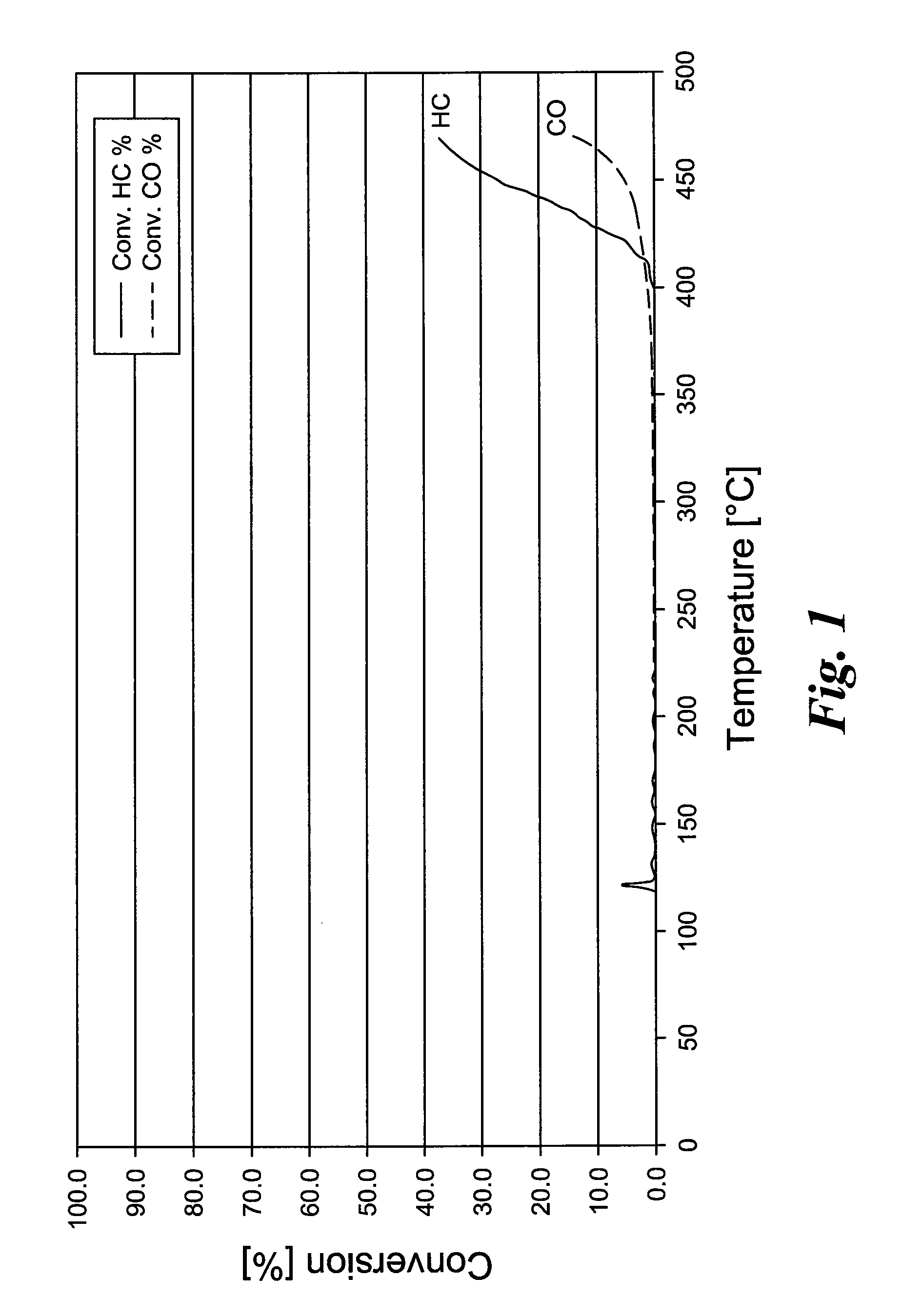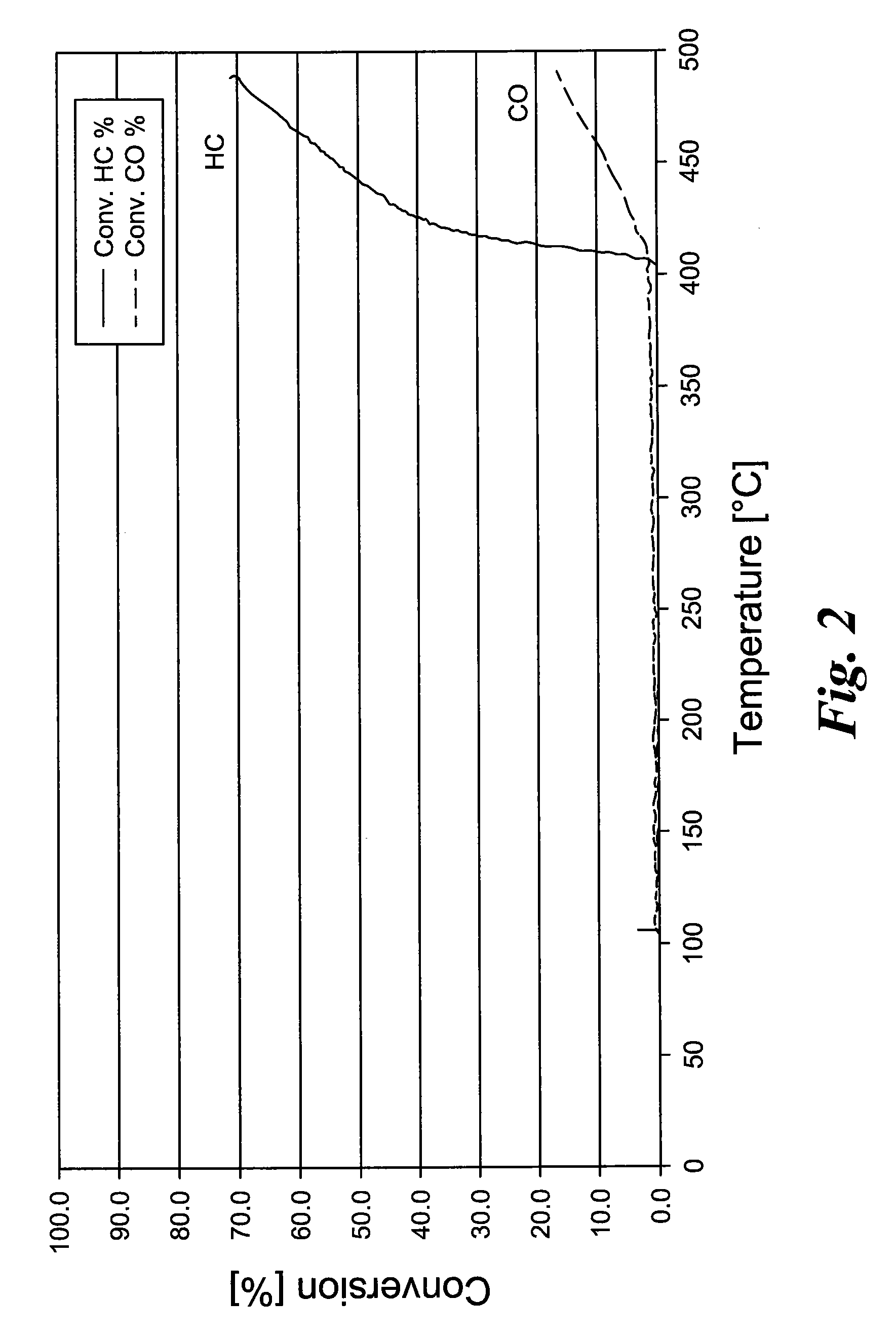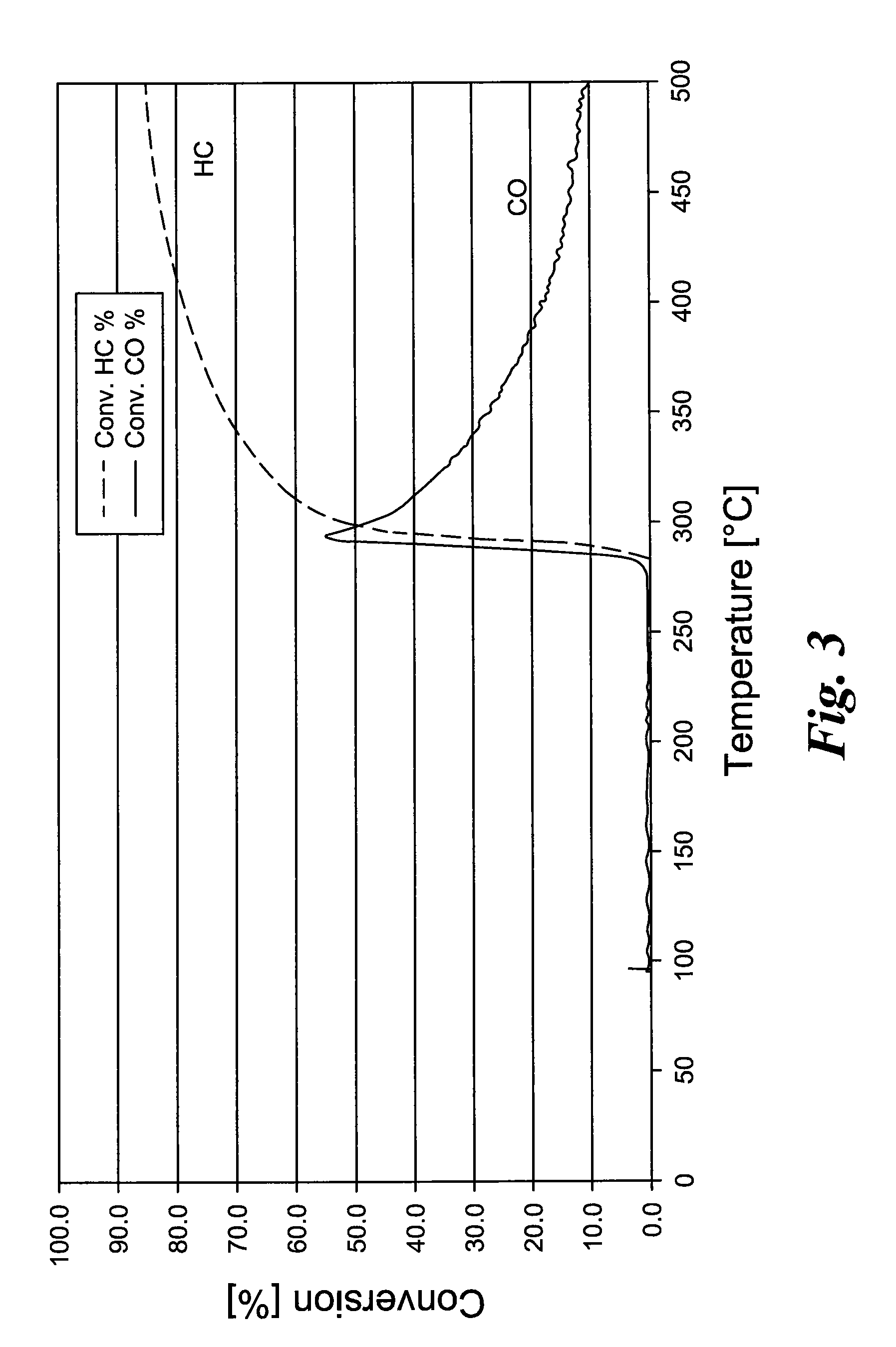Oxidation catalyst
- Summary
- Abstract
- Description
- Claims
- Application Information
AI Technical Summary
Benefits of technology
Problems solved by technology
Method used
Image
Examples
example 1
Ce—Ti—Cr Oxide in a Ratio of 20-50-30
[0035]230.9 g Cr(III) nitrate is dissolved in 300 ml deionized water (pH=0.94). 102.4 g Ce nitrate solution (19.5% Ce) and 521.6 g titanium oxide sulfate solution are weighed out, and the titanium oxide sulfate solution is added to the Cr nitrate solution. Then, the Ce nitrate solution is added. 600 ml of 12.5% NH3 solution is provided in a vessel, and the Ce—Ti—Cr solution is slowly dripped into the NH3 solution. During the addition, the pH value is held at >7 with additional NH3 solution. The precipitated CeTiCr oxide is filtered and washed sulfate free. The resulting powder is dried at 110° C. and heated 4 hours at 500° C. Finally, the powder is ground to form a coatable wash-coat slurry. For testing the catalytic activity, metal honeycomb is coated with a 200 g / l coating quantity and tested in a synthesis gas apparatus.
[0036]The temperature-dependent conversion rates of hydrocarbons and carbon monoxide are reproduced in FIG. 1.
example 2
Al2O3Ce—Ti—Cr Oxide in Ratio 40% Al2O3 and 60% CeTiCr Oxide in Ratio 20-50-30
[0037]According to Example 1, a precipitation reagent is produced from Ce nitrate solution, titanium oxide sulfate solution, and Cr(III) nitrate solution. A commercial gamma Al2O3 is suspended in water and set to pH 8 to 9 with NH3 solution. The Ce—Ti—Cr solution is now dripped slowly while controlling the pH value (>7). The Ce—Ti—Cr oxide precipitated onto the Al2O3 is filtered, washed sulfate free, dried, and tempered. Then the powder is ground to form a coatable wash-coat slurry. For testing the catalytic activity, metal honeycombs are coated with a 200 g / l coating quantity and tested in a synthesis gas apparatus.
[0038]The temperature-dependent conversion rates of hydrocarbons and carbon monoxide are reproduced in FIG. 2.
example 3
0.018 g / l Pd—Al2O3—Ce—Ti—Cr Oxide in Ratio 40% Al2O3 and 60% CeTiCr 20-50-30 Oxide
[0039]According to Example 1, a precipitation reagent is produced from Ce nitrate solution, titanium oxide sulfate solution, and Cr(III) nitrate solution. A commercial gamma Al2O3 is suspended in water and set to pH 8 to 9 with NH3 solution. The Ce—Ti—Cr solution is now dripped slowly while controlling the pH value (>7). The Ce—Ti—Cr oxide precipitated onto the Al2O3 is filtered, washed sulfate free, dried, and heated. Then the powder is ground to form a coatable wash-coat slurry. At a pH value of 4, according to the solid content of the wash-coat suspension, a Pd nitrate solution is dripped, so that a precious metal load of 0.018 g / l (0.5 g / ft3) Pd is produced. For testing the catalytic activity, metal honeycombs are coated with a 200 g / l coating quantity and tested in a synthesis gas apparatus.
[0040]The temperature-dependent conversion rates of hydrocarbons and carbon monoxide are reproduced in FIG. ...
PUM
| Property | Measurement | Unit |
|---|---|---|
| Temperature | aaaaa | aaaaa |
| Temperature | aaaaa | aaaaa |
Abstract
Description
Claims
Application Information
 Login to View More
Login to View More - Generate Ideas
- Intellectual Property
- Life Sciences
- Materials
- Tech Scout
- Unparalleled Data Quality
- Higher Quality Content
- 60% Fewer Hallucinations
Browse by: Latest US Patents, China's latest patents, Technical Efficacy Thesaurus, Application Domain, Technology Topic, Popular Technical Reports.
© 2025 PatSnap. All rights reserved.Legal|Privacy policy|Modern Slavery Act Transparency Statement|Sitemap|About US| Contact US: help@patsnap.com



